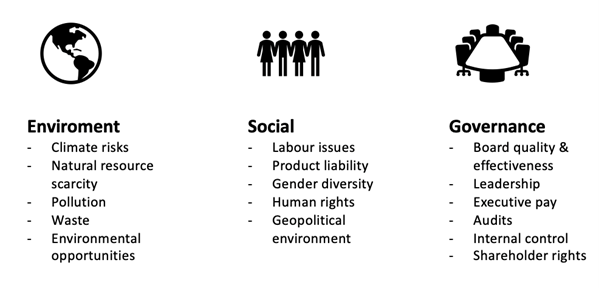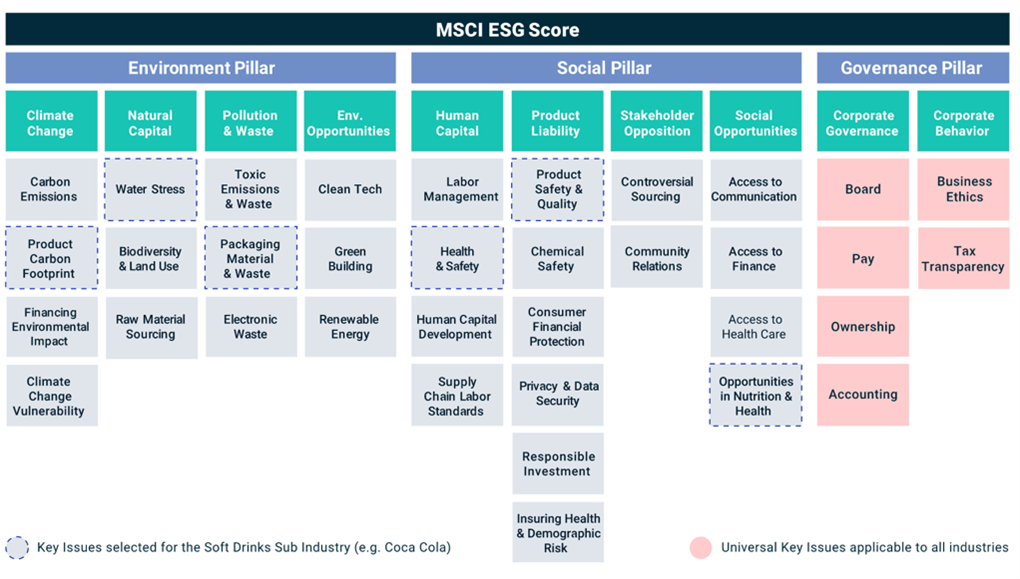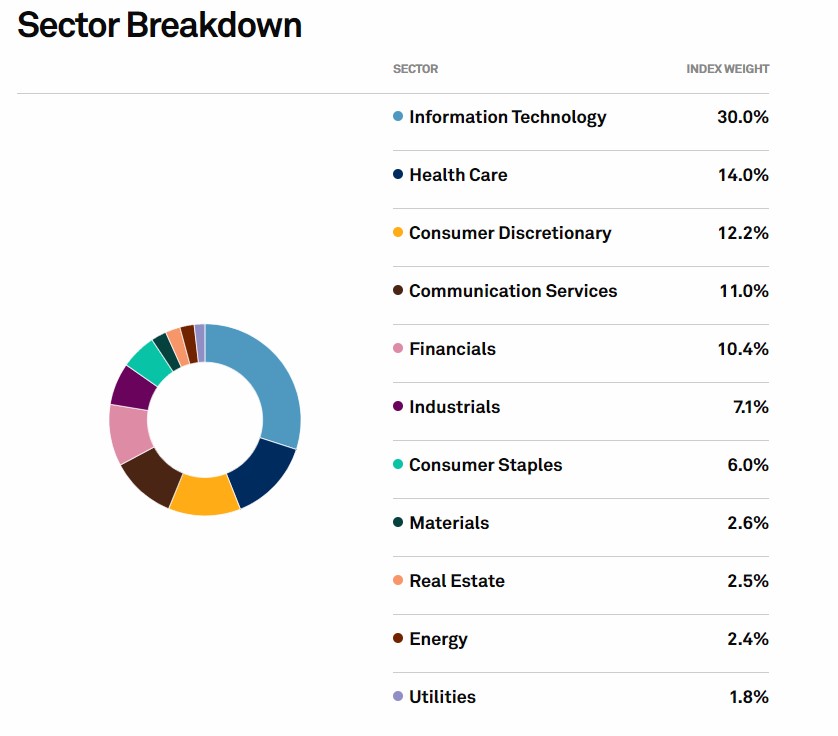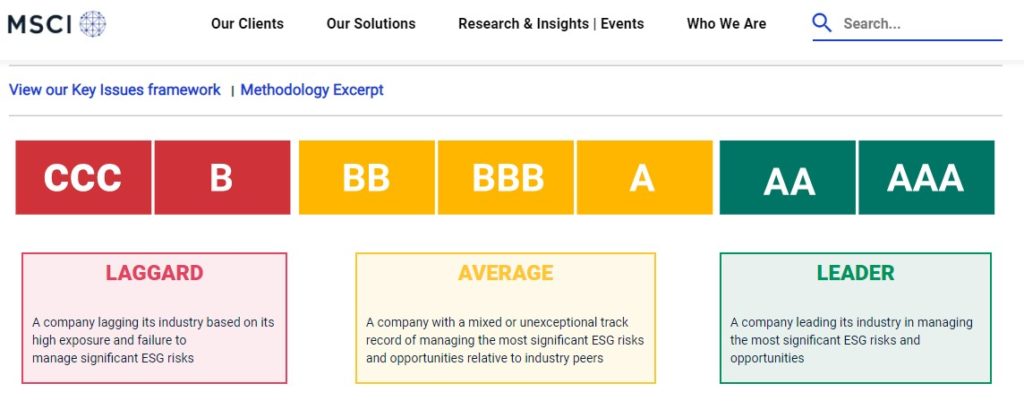We have all seen ESG, as in Environmental, Social and Governance, bandied around as a new(ish) buzz word in Finance, so today I wanted to take our first dive into this topic.
Background
We can define ESG as a set of non-financial factors that are used as criteria to compare a companies impact on the environment, contribution to social goals and quality of governance with other firms.

In theory companies which score higher on ESG criteria will perform better over the long term and investors should prefer to buy their debt or equity in comparison to companies that score poorly.
The question then is how to check and compare companies on these ESG criteria?
We wound want a scoring system and a threshold based rating system.
ESG Scores or Ratings
Indeed we find that a number of firms produce such scores or ratings e.g. ISS, MSCI, S&P Global.
Taking MSCI as an example, we see a nice analogy to the Credit Ratings that are ubiquitous in finance.
Laggard, Average and Leader, reads better than CCC, BB or AA? (Depends on your mental model).
To determine these ratings, MSCI evaluates thousands of data points across 35 key ESG factors, which are weighted according to impact, time-horizon and relevance to an industry.

Which is all great, however unlike Credit Ratings, comparing ESG Ratings from different providers on the same company show a wider variation in result than an investor would want to see.
Not only are the methodologies and weightings assigned to hundreds of indicators different, but the input data are different.
Which is why there a number of global initiatives to standardize disclosures, such as the FSB Task Force on Climate-related Financial Disclosures (the TCFD) or the EU Regulation on sustainability disclosures in the financial services sector (the SFDR).
Over time such standards should lead to a convergence of principles and methodologies.
Using ESG Scores in Investing
So how do these ESG Scores or Ratings get used in financial decisions?
For Active investment e.g. picking a stock or bond issue, the answer is straightforward and along the lines of filtering your universe of possible investments by an ESG rating and then selecting only from this screened universe.
For Passive investment, using an Index, what do we do?
Step in the Index providers, who offer ESG screened versions of their major Equity Indices e.g.
- S&P Global has S&P500 ESG Index
- Qontigo has STOXX Europe 600 ESG-X
- MSCI has ESG Leaders
- FTSE Russell has Emerging Asia ESG Index
Taking S&P500 as an example we can see from the Data section that this currently has 295 constituents, the remaining 205 out of 500 in the underlying S&P500 index having been screened, resulting in the following sector breakdown.

In comparison STOXX Europe 600 ESG-X has 581 constituents, meaning just 19 have been screened.
Clearly different methodologies in the ESG screening for these two major indices.
With such ESG screened Indices, the next step to investing is obvious.
ESG Financial Products
We can take our pick from:
- Exchange Trade Funds (ETFs)
- Futures and Options (F&O)
- Total Return Swaps (TRS)
All the major ETF providers, Fidelity, iShares, Lyxor, Vanguard to name a few, offer ESG ETFs or Funds.
Of more interest to this blog are Futures and Options and here we see:
- CBOE with S&P 500 ESG Index Options
- CME with E-mini S&P 500 ESG Futures
- EUREX with STOXX Europe 600 ESG-X Futures and Options
- EUREX with DAX, ESTX50 and MSCI ESG Family of Indices
- EURONEXT with Eurozone ESG Large 80 Index
- ICE with MSCI ESG Family of Indices
- Nasdaq OMX with OMXS30 ESG
- SGX with FTSE ESG Index Futures
No lack of new products and competition here.
It appears from above that Europe is leading the pack.
A thread I will pick-up in a future article.
For now, I hope that was a useful first dive into ESG.

